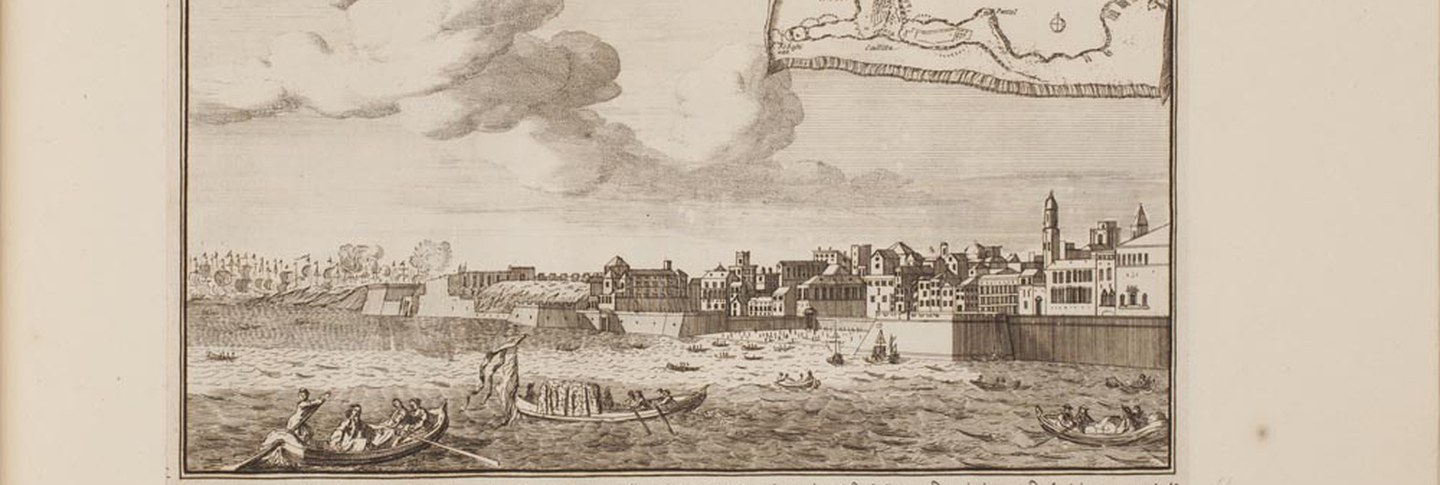In eighteenth-century Europe, it was popular to grow exotic plants from new areas of exploration. This required the long-distance transport of seeds or live specimens from far-flung territories or imperial possessions to European centers, such as Cadiz, Spain's main trading port for much of the eighteenth century, illustrated above in Pieter van den Berge's late seventeenth-century Theatrum Hispaniae.
However, it proved difficult to transport plants across oceans on long voyages that often took months. Even seed, as one historian writes, “lost its viability, rotted, mildewed and sweated, while even the toughest roots packed in sand in tightly bound boxes shot into the holds of ships either sweated or were frozen to death.” John Ellis (1710–1776) was the most successful plant transporter of the eighteenth century. His book, Directions for bringing over Seeds and Plants from the East-Indies and Other Distant Countries, explains his methods of collecting seeds and plants and keeping them viable on long journeys. The transportation of exotic seeds and plants to Europe from the East Indies and other distant countries was not Ellis’s only aim. He was also keenly interested in matters of economic botany. Included with his Directions was “A catalogue of such foreign plants as are worthy of being encouraged in our American Colonies, for the Purposes of medicine, agriculture, and commerce.”
Bibliography
- Plants in Print: The Age of Botanical Discovery. Washington, DC: United States Botanic Garden; Glencoe, IL: Chicago Botanic Garden, 2004. An exhibition catalogue.
- Lemmon, Kenneth. The Golden Age of Plant Hunters. 1st American ed. South Brunswick, NY: A. S. Barnes, 1969.
- Wulf, Andrea. The Brother Gardeners: Botany, Empire and the Birth of an Obsession. London: William Heinemann, 2008.



